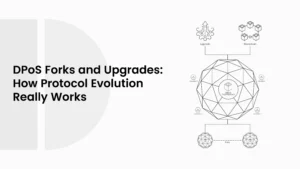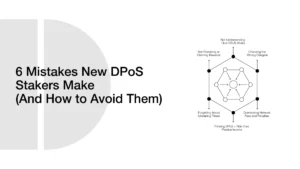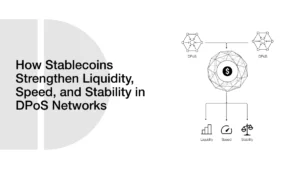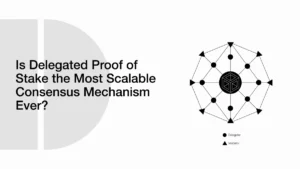The History of DPoS: From Dan Larimer to Modern‑Day Chains
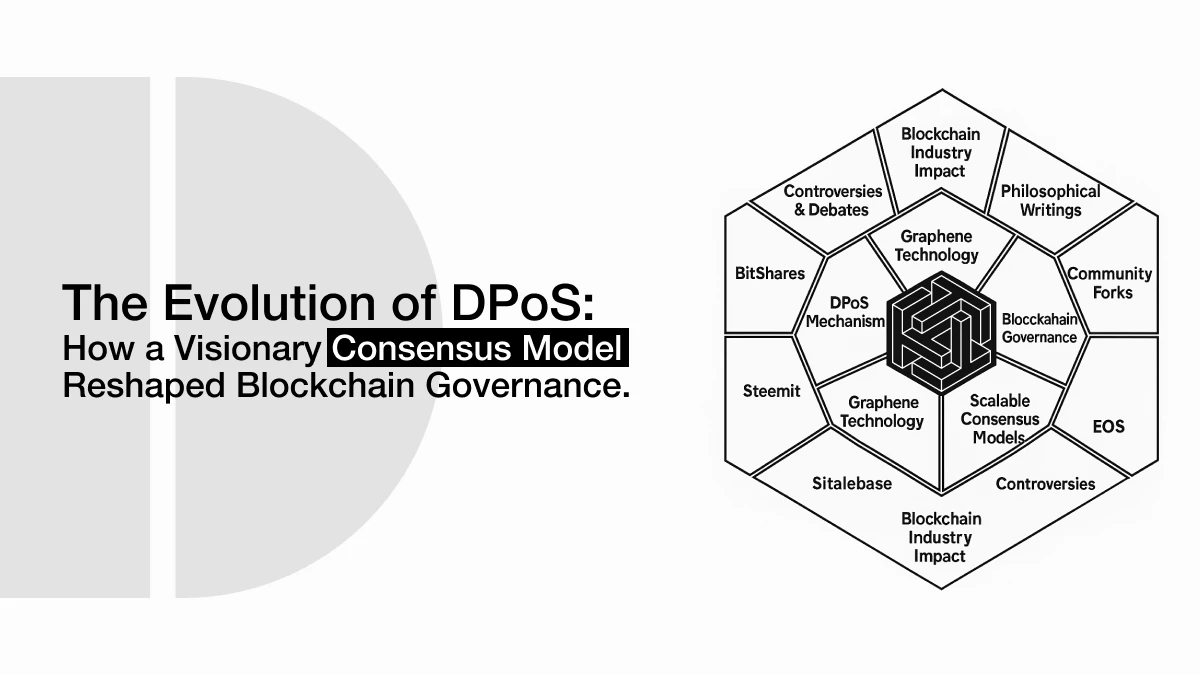
The future of blockchain consensus mechanisms has been shaped by the demand for faster, greener, and more trustworthy solutions in decentralized networks. The Delegated Proof of Stake (DPoS) was one of the solutions that emerged to address these requirements through the creation of quicker validation and governance by the community.
- Rethinking Consensus: The Motivation Behind DPoS
- Dan Larimer Introduces DPoS
- From BitShares to Steemit: Applying DPoS to Social Media
- Scaling DPoS with EOS
- Cardano Brings DPoS into the Mainstream
- How DPoS Works and Why It Matters
- The Road Ahead: Participation and Accountability
- Conclusion: A Model That Shaped Modern Blockchain
It was initiated by Dan Larimer’s vision, which gained momentum to become a fundamental component of multiple impactful Layer 1 blockchain networks. Understanding how DPoS originated, how it was implemented on various platforms, and how it operates today offers valuable insights into both the technical aspects of the process and its practical implications.
Rethinking Consensus: The Motivation Behind DPoS
During its infancy, the Proof of Work (PoW) and Proof of Stake (PoS) were among the most popular consensus systems used by blockchain startups. Bitcoin adopted a trustless system with the support of computing through PoW. PoS decreased the amount of energy consumption by PoW, yet still provided unanswered questions regarding the validator selection process, participation, and responsiveness of the network.
Researchers exploring Byzantine fault tolerance have highlighted the importance of building systems that can maintain consensus even when parts of the network behave unpredictably. These challenges prompted developers to seek alternatives that would enable blockchain networks to operate efficiently without compromising security or fairness. This is the environment where Dan Larimer began to shape the idea of Delegated Proof of Stake.
Dan Larimer Introduces DPoS
The performance, combined with the democratic control, was proposed by Dan Larimer in 2013 under the name of Delegated Proof of Stake. Instead of granting validation rights to every participant, DPoS enables the creation of a small number of representatives that the token holders can choose (often referred to as delegators or block producers) to issue blocks. Such delegates then validate the transactions and mine the blocks.
This system is accountable to the community because the community elects its members and can be changed at any time. The first test of this idea occurred when BitShares was launched in 2015 to a live test. BitShares utilizes a pool of elected witnesses to maintain low block times, typically around three seconds.
Continuous voting also implied that the network would be able to address poor performance or misconduct without the need for a hard fork. It was among the initial perspectives of established blockchain platforms that demonstrated the feasibility of combining performance and stakeholder management in the real world.
Also Read: What Is Delegated Proof of Stake (DPoS)? A Beginner’s Guide
From BitShares to Steemit: Applying DPoS to Social Media
Following the technical success of BitShares, Larimer turned to another use case: decentralized social media. In 2016, he launched Steemit, a content platform where users could earn rewards for creating and curating posts. Steemit was also built on a DPoS framework, but this time, the model prioritized user engagement over financial transactions.
In Steemit, voting power was tied to token holdings, allowing users to influence which content received visibility and rewards. The same DPoS principle of electing block producers applied, but now it was being used to shape a social ecosystem. While Steemit gained attention for introducing a new model of platform ownership and reward distribution, it also faced challenges. Governance disputes eventually led to a contentious acquisition, which caused part of the community to create Hive, a new chain with similar architecture but stronger community oversight.
This transition from BitShares to Steemit demonstrated how DPoS can be applied in various sectors while maintaining its focus on community-driven control.
Scaling DPoS with EOS
By 2018, Larimer was ready to expand DPoS further with the launch of EOS through Block.one. EOS aimed to provide blockchain infrastructure for large-scale applications, with speed and scalability as key priorities. Like previous DPoS systems, EOS relied on a group of elected block producers,in this case, 21, who were responsible for maintaining the network.
EOS demonstrated that DPoS could handle high-volume transactions and support complex decentralized applications. It offered near-feasible usage and fast confirmation times. However, it also brought renewed concerns around the concentration of voting power and the possibility of vote trading. These issues raised essential questions about whether networks with a small number of delegates could remain truly decentralized in practice.
The EOS experience showed that while DPoS can deliver strong performance, its success also depends on well-designed governance rules and active community involvement.
Cardano Brings DPoS into the Mainstream
As DPoS continued to attract interest, new blockchain platforms began adapting the model to their own needs. One of the most successful of these is Cardano. While not created by Larimer, Cardano adopted a variation of DPoS called Ouroboros, which introduced formal methods and academic research to the consensus design. Cardano enables users to delegate their stake to professional operators, known as stake pool leaders, who then validate blocks on their behalf.
What sets Cardano apart is its emphasis on decentralization, scientific peer review, and long-term sustainability. Its governance model allows protocol upgrades through community input, while its technical architecture supports scalability without compromising security. Today, Cardano ranks among the top 20 blockchain projects on CoinMarketCap, representing one of the most successful large-scale implementations of a DPoS-inspired model.
Cardano’s approach highlights how DPoS concepts can be refined and applied with a stronger focus on research, transparency, and user participation.
How DPoS Works and Why It Matters
At a technical level, DPoS operates by allowing token holders to vote with their stake for a select group of block validators. These validators take turns producing blocks in a predictable schedule. Since DPoS does not require the energy-intensive computations used in PoW, it is more efficient and suitable for networks that prioritize performance.
A unique feature of DPoS is that voting is continuous. If a validator begins acting against the network’s interest or fails to meet performance expectations, stakeholders can replace them. This keeps the system flexible and responsive, provided the community stays engaged.
Many DPoS platforms also feature on-chain governance, allowing proposals for protocol upgrades, funding, or rule changes to be voted on directly by the community. This helps avoid contentious forks and makes it easier to adapt to new requirements.
The Road Ahead: Participation and Accountability
Looking forward, the strength of DPoS networks will depend on their ability to keep participants involved and informed. A system that relies solely on voting works only when users choose to exercise their power. Without active participation, voting rights may become concentrated among a small number of actors, reducing transparency and fairness.
To address these challenges, some platforms are testing new governance features such as on-chain identity systems, reputation-based influence, and alternative voting models like quadratic voting. These tools aim to create more balanced systems where power is not solely tied to wealth or early adoption.
The continued impact of DPoS will depend on how well networks can combine speed and performance with fair and transparent governance structures.
Conclusion: A Model That Shaped Modern Blockchain
Delegated Proof of Stake originated as an idea by Dan Larimer to enhance blockchain efficiency and governance. From BitShares to Steemit, from EOS to Cardano, it has shaped how blockchain networks manage performance, participation, and control. Today, DPoS supports a range of applications, including financial platforms, content curation, and smart contract infrastructure.
Although it has faced criticism around centralization and voter apathy, DPoS remains a key part of the blockchain landscape. Its flexibility, energy efficiency, and focus on stakeholder control continue to influence how decentralized systems are designed and operated. As more projects experiment with new governance tools and validator models, DPoS will remain central to the discussion around blockchain’s future.

